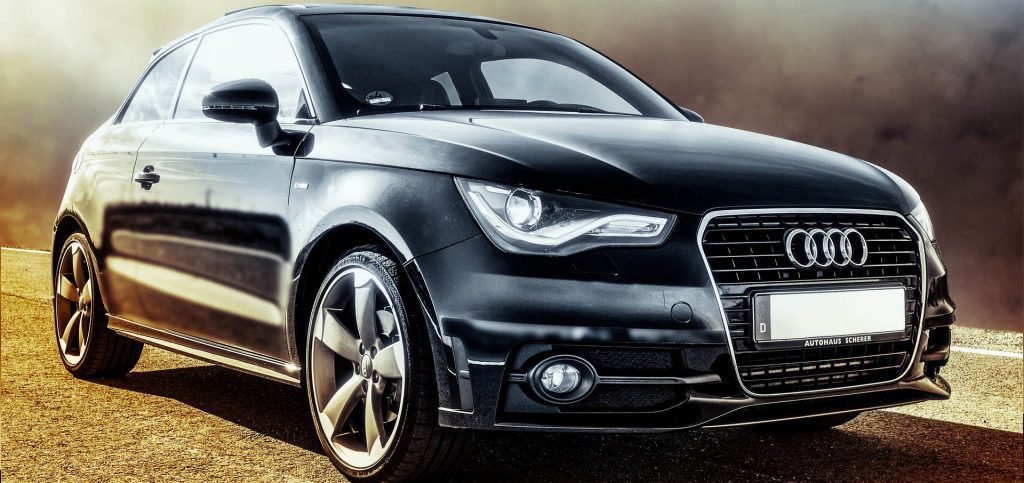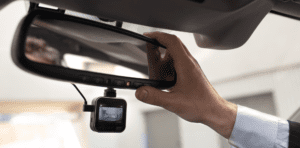Compare cheap car insurance
✔ Compare cheap car insurance quotes
✔ Over 110 insurance providers
✔ Get a quote in minutes
✔ Save up to £504*


- What are car insurance groups?
- What do car insurance groups mean?
- How are car insurance groups decided?
- What are the cheapest cars to insure?
- What insurance group do electric cars fall into?
- How is car insurance calculated?
- How can I cut the cost of car insurance?
- Car insurance groups 1-10
- Compare car insurance
What are car insurance groups?
Car insurance groups are a way for insurance companies to categorise vehicles based on their level of risk. The groups are determined by the Association of British Insurers (ABI) and are used by most insurance companies in the UK.
The groups range from 1 to 50, with group 1 being the lowest risk and group 50 being the highest risk. Factors that are taken into account when determining a vehicle’s group include its value, repair costs, safety features, and performance. For example, a high-performance sports car is likely to be placed in a higher group than a small city car.
The group that a vehicle is placed in will affect the cost of insurance. Cars in lower groups will typically have lower insurance premiums, while cars in higher groups will have higher premiums. This is because cars in higher groups are considered to be more expensive to repair or replace in the event of an accident.
It’s important to note that the group that a vehicle is placed in is not the only factor that affects the cost of insurance. Other factors, such as the driver’s age, driving history, and location, will also be taken into account.
When shopping for car insurance, it’s helpful to check which group the car you’re interested in is placed in. This will give you an idea of the cost of insurance for that vehicle. It’s also worth noting that some insurance companies may have their own groupings, which may differ from the ABI’s.
What do car insurance groups mean?
Car insurance groups are a way for insurance companies to categorize vehicles based on their level of risk. The groups, which range from 1 to 50, are determined by the Association of British Insurers (ABI) and are used by most insurance companies in the UK.
Factors that are taken into account when determining a vehicle’s group include its value, repair costs, safety features, and performance. Cars in lower groups will typically have lower insurance premiums, while cars in higher groups will have higher premiums, as they are considered to be more expensive to repair or replace in the event of an accident. It’s important to check which group the car you’re interested in is placed in when shopping for car insurance.
How are car insurance groups decided?
Car insurance groups are determined by the Association of British Insurers (ABI) and are used by most insurance companies in the UK to categorize vehicles based on their level of risk. The groups range from 1 to 50, with group 1 being the lowest risk and group 50 being the highest risk.
When determining a vehicle’s group, the ABI takes into account several factors such as the vehicle’s value, repair costs, safety features, and performance. For example, a high-performance sports car is likely to be placed in a higher group than a small city car. The vehicle’s list price, the cost of parts, the time it takes to repair the vehicle, and the cost of labour are all taken into account.
Additionally, the ABI also consider the vehicle’s security features such as alarms, immobilizers, tracking devices, etc. The higher the level of security, the lower the insurance group, as it reduces the risk of theft or vandalism.
The ABI also looks at the vehicle’s safety features such as airbags, anti-lock brakes, stability control and other advanced safety technologies. Cars with high safety ratings are placed in lower insurance groups, as they are less likely to be involved in accidents and less expensive to repair.
New car value: The value of a new car is an important factor in determining the potential replacement and repair costs. The price and features of a vehicle can indicate the expenses that may be incurred in the event of damage.
Parts and repair: The cost of repairs is also based on the extent of damage to each model and the price of necessary parts. The prices of 23 common parts are used for comparison purposes when determining repair costs.
Repair times: The duration of repairs plays a role in determining insurance groups. Cars that take longer to repair generally have higher insurance group ratings.
Performance: High-performance cars are considered riskier to insure, thus, factors such as acceleration and top speed are taken into account when determining insurance groups.
Safety: Vehicles equipped with advanced safety features like autonomous emergency braking systems are less likely to be involved in low-speed accidents, which can result in lower insurance group ratings.
Bumper compatibility: The design of a car’s bumper can affect the potential cost of insuring the vehicle, and thus its insurance group rating.
Car security: Security features like alarms, immobilization systems, and high-security door locks can lower the insurance group rating of a vehicle, but lost keys/fobs can increase replacement costs.
Furthermore, the ABI also takes into account the vehicle’s performance characteristics such as power, speed, and fuel consumption, which are considered while determining the group. Cars with high-performance engines, high top speeds, and low fuel efficiency tend to be placed in higher insurance groups as they are considered riskier to insure.
What are the cheapest cars to insure?
- Ford Ka
- Vauxhall Corsa
- Volkswagen Polo
- Peugeot 107
- Citroen C1
Note: The above list is based on car models that are generally considered to be among the cheapest to insure in the UK. However, the specific cost of insurance for a particular car will depend on a number of factors, including the driver’s age, location, and driving history.
What insurance group do electric cars fall into?
Electric cars, also known as electric vehicles (EVs), are becoming increasingly popular as more and more people look for ways to reduce their carbon footprint and save money on fuel costs. One of the questions that many potential EV buyers have is what insurance group electric cars fall into.
Insurance groups are a way of determining the cost of insuring a vehicle. Cars are assigned to one of 50 groups, with group 1 being the cheapest to insure and group 50 being the most expensive. The group a car falls into is determined by a number of factors, including the cost of the car, its performance, and the likelihood of it being stolen or involved in an accident.
Electric cars tend to fall into lower insurance groups than their petrol or diesel counterparts. This is because they are generally considered to be less powerful and less likely to be involved in an accident. Additionally, the absence of internal combustion engine makes them less attractive to thieves, and they are less likely to be stolen.
For example, the Nissan Leaf, which is one of the most popular electric cars in the UK, falls into insurance group 11. The Renault ZOE and the BMW i3 fall into insurance group 16, and the Tesla Model S falls into insurance group 49. These are relatively low insurance groups compared to many petrol or diesel cars.
It’s worth noting that the specific insurance group a particular electric car falls into can vary depending on the trim level, age, and other factors. Additionally, some insurance companies may offer discounts for electric cars as part of their green initiatives.
In conclusion, electric cars tend to fall into lower insurance groups than their petrol or diesel counterparts. This means that they are generally cheaper to insure. However, the specific insurance group a particular electric car falls into will depend on a number of factors, and it’s always a good idea to check with your insurance company to get an accurate quote.
How is car insurance calculated?
Car insurance is calculated based on a variety of factors that are considered to be indicators of risk for the insurance company. These factors include the driver’s age, gender, location, driving record, and the type of car being insured.
The driver’s age and gender are considered because statistics have shown that younger and male drivers are more likely to be involved in accidents. The driver’s location is also important because rates tend to be higher in urban areas where there is more traffic and a higher likelihood of accidents.
Driving record is also a major factor in determining car insurance rates. Drivers with a history of accidents, speeding tickets, or other infractions will typically pay higher rates than those with a clean driving record.
The type of car being insured is also considered when calculating car insurance rates. Luxury and sports cars tend to be more expensive to insure because they are more expensive to repair or replace in the event of an accident.
Another important factor is the cover level you choose. The more cover you have, the more expensive your insurance will be. However, having a higher cover level can also give you peace of mind in case of an accident.
Overall, car insurance companies use a variety of factors to calculate rates and determine how much to charge for cover. By understanding these factors and how they affect your rates, you can make more informed decisions about your car insurance cover.
How can I cut the cost of car insurance?
Car insurance can be a significant expense for many people, but there are several ways to cut the cost of your cover. Here are a few tips to help you save money on your car insurance:
Compare rates: One of the best ways to save money on car insurance is to shop around and compare over 110 quotes with Comparoo. Each insurance company uses its own formula to calculate rates, so the price you pay can vary significantly from one provider to another.
Bundle your policies: Many insurance companies offer discounts for bundling multiple policies together, such as home and car insurance. By bundling your policies, you can save money on both your car insurance and your home insurance.
Maintain a good driving record: A good driving record can be a great way to qualify for lower car insurance rates. Avoid getting traffic tickets, and try to avoid accidents whenever possible.
Consider Telematics: Some insurance companies offer usage-based insurance programs that track your driving habits and offer discounts if you drive safely.
Look for discounts: Many insurance companies offer discounts for a variety of things such as good student, safe driver, low mileage, multiple cars, and even for taking a defensive driving course.
Consider your cover level: If you are looking to save money, you should consider dropping cover you don’t need or increasing the deductible on your policy.
Protect Your Car: Enhancing your vehicle’s security features and storing it in a locked garage can reduce the risk of theft and lower your insurance costs.
Increase Your Excess: Agreeing to pay a higher excess on any claims can lower your premiums.
Add a Named Driver: Including a driver with a solid driving history and few insurance claims can help lower your policy’s cost.
Pay Annually: Many insurers offer discounts for customers who pay their premiums annually instead of monthly.
Accumulate No-Claims Bonus: Insurers may offer lower rates if you have not made any claims in a while, the longer you go without making a claim the better.
Drive Less: Lowering the estimated mileage on your policy by driving less can decrease the chances of an accident and the need to file a claim.
Pay-as-you-go: Pay-as-you-go policies typically involve paying a fixed monthly premium for parked cover, and additional fees based on mileage driven.
By following these tips, you can save money on your car insurance without sacrificing the cover you need. Remember to shop around and compare rates, and don’t be afraid to ask your insurance company about discounts or other ways to save money on your policy.
Car insurance groups 1-10
Cars in insurance groups 1-10 are typically the cheapest cars to insure. Find out more about groups 1-10 in the links below:
- Group 1 car insurance
- Group 2 car insurance
- Group 3 car insurance
- Group 4 car insurance
- Group 5 car insurance
- Group 6 car insurance
- Group 7 car insurance
- Group 8 car insurance
- Group 9 car insurance
- Group 10 car insurance
Compare car insurance
Comparoo is a comparison website that allows you to compare car insurance quotes from over 110 providers. By using Comparoo, you can find the cheapest car insurance policy that suits your needs. With just a few clicks, you can compare policies from different providers and find the best deal.
Comparoo allows you to compare policies based on different factors such as cover, deductibles, and discounts. This means that you can find a policy that fits your budget and your cover needs.
On average, Comparoo customers can save up to £504 by comparing car insurance quotes. This is a significant saving that can help you to lower your car insurance costs and keep more money in your pocket.
If you’re looking for cheap car insurance, Comparoo is a great resource to help you find the best deal. With over 110 providers to choose from, you’re sure to find a policy that fits your needs and budget.










